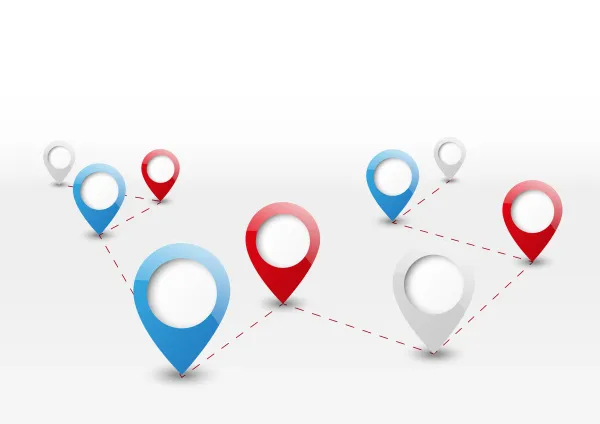EM Coding Alert
3 Answers Clear Up Your Advance Care Planning Coding Confusion
Experts share what to include in 99497 and +99498 documentation. Navigating the time and documentation requirements of 99497 and +99498 can be tricky, but do you know that you can report these codes with other services? Follow these expert tips before you make a potentially costly mistake. Heads up: In E/M Coding Alert Vol. 5 No. 7, you learned how to successfully report your advance care planning (ACP) services in the article “3 Tips Help Hone Your Advance Care Planning Skills.” Now, by answering these three questions, you’ll learn even more about ACP reporting and how to protect your reimbursement. Remember the Importance of Time Question 1: What is the time requirement for 99497 and +99498? Answer 1: The 2017 CPT® manual gives you codes 99497 (Advance care planning including the explanation and discussion of advance directives such as standard forms [with completion of such forms, when performed], by the physician or other qualified health care professional; first 30 minutes, face-to-face with the patient, family member[s], and/or surrogate) and +99498 (… each additional 30 minutes [List separately in addition to code for primary procedure]) to report your ACP services. Since 99497 and +99498 are time-based codes, you must note that a unit of time is attained when the mid-point is passed, says Kent Moore, senior strategist for physician payment at the American Academy of Family Physicians. The physician must spend at least 16 minutes in ACP before he can report 99497, and he must spend at least 46 minutes before he can report +99498 in addition to 99497, according to Moore. “The definition of time in ACP codes 99497 and +99498 indicates the first 30 minutes and each additional 30 minutes,” says JoAnne Sheehan, CPC, CPB, CPPM, COC, CPC-I senior instructor/coach at Certification Coaching Organization, LLC in Oceanville, New Jersey. “From a CPT® perspective, the time requirement for this service is met when the midpoint is passed, which is 16 minutes.” The documentation within the medical record should illustrate this time frame to substantiate the codes selected. The documentation not reflecting the start and stop time of the service could be one of the biggest errors she sees with reporting 99497 and +99498, says Najwa N. Liscombe, BHSA, CPC-CPC-I, CMA , coding reimbursement analyst III at the University of Florida College of Medicine and Community Health and Family Medicine in Gainesville, Florida. The guidelines do not stipulate that start and stop time must be recorded, however, because these are time-based codes, time must be mentioned, according to Suzan Hauptman, MPM, CPC, CEMC, CEDC, AAPC Fellow, senior principal of ACE Med in Pittsburgh. It should not be approximate or mentioned using time descriptors like “a lot of time,” “a lengthy period,” and the like, says Hauptman. Caution: Always verify with your payers regarding their ACP policy, Sheehan says. Include This Info in ACP Documentation Question 2: What should the physician include in his documentation for 99497 and +99498? Answer 2: Several elements are essential in 99497 and +99498 documentation, including that the codes’ definitions specify that the service requires face-to-face time with the patient or a family member, says Laureen Jandroep, CPC, COC, CPC-I, CPPM, founder/CEO Certification Coaching Organization, LLC in Oceanville, New Jersey. Other vital details include the following: Time: As previously discussed, time is one of the very first details you should look for in the documentation for 99497 and +99498, says Maggie M. Mac, CPC, CEMC, CHC, CMM, ICCE, AHIMA-approved ICD-10 CM/PCS trainer and president of Maggie Mac-Medical Practice Consulting in Clearwater, Florida. Jandroep agrees that key elements the physician should document to support 99497 and +99498 are the duration of time spent since it is a time-based code, documentation of the discussion, and decisions made, etc. Advance directives: The documentation for 99497 and +99498 should also indicate that the physician and patient discussed advance directives, whether or not they completed any legal forms, according to Sheehan. “Always indicate the amount of time spent on this service,” Sheehan adds. Definition: An advanced directive is a document appointing an agent and/or recording the wishes of a patient pertaining to his or her medical treatment at a future time should he or she lack decisional capacity at that time, according to Sheehan. “In most states, you can include special requests in your advance directives such as wishes about organ donation, cremation, or burial,” says Chelle Johnson, CPMA, CPC, CPCO, CPPM, CEMC, AAPC Fellow, staff services coordinator/billing/credentialing/auditing/coding at County of Stanislaus Health Services Agency in Modesto, California. Although the patient is not required to fill out forms during ACP, the documentation should always show what the physician and patient discussed as far as advanced directives, Mac agrees. This advance directive discussion could include anything from making sure the patient has a healthcare proxy, a durable power of attorney, a living will, and orders for life-sustaining treatment, Mac says. The physician can give samples of these forms to the patient during this conversation. Life-sustaining treatment decision: Physicians should also include specifics on the types of life-sustaining treatments that the patient would or would not like, according to Johnson. Mac agrees that specifics are key. The physician must document specifics about whether or not the patient wants to be on a ventilator or what kind of life-sustaining treatment they will allow because there are varying levels, Mac says. The physician’s documentation is not the legal document around these wishes of the patient, however, the visit summary should be given to the patient to outline the discussion to explore further with family, caretakers, and legal representatives, adds Hauptman. Opportunity to change mind: The physician could also document the discussion around the patient’s awareness that he can change his advance directives at any time. Nothing is set in stone, Mac says. The patient must know he has this option. The patient can also change his proxy at any time, according to Mac. He doesn’t have to use the same person. Report ACP With Other Services Question 3: Can I report 99497 and +99498 on the same day of other services? Answer 3: Yes. You may report 99497 and +99498 on the same day as other services. Here are some specific examples: E/M services: You may report 99497 and +99498 separately if the physician performs these services on the same day as another E/M service, according to the 2017 CPT® Manual. You can bill ACP with other E/M services, although some payers may require a modifier 25 (Significant, separately identifiable evaluation and management service by the same physician or other qualified health care professional on the same day of the procedure or other service), Liscombe says. Annual Wellness Visit (AWV): The physician can also perform ACP services at the same time as an AWV visit. By physicians appending modifier 33 (Preventive services) when billing ACP with an AWV, according to Liscombe, the copayment and deductible amounts would be waived. “This [modifier] is primarily for traditional Medicare FFS, but should be verified if other payers have the same requirement,” Liscombe says. Bottom line: Although you can bill an ACP when no annual visit is provided, the claim would not be considered preventive, and a copayment, coinsurance, or deductible will be applied if applicable. When this situation happens, patients are not happy to have a copay because they were unaware that it applies outside an annual visit, Liscombe says. Transitional and Chronic Care: You may also bill 99497 and +99498 during the same service period as transitional care management services or chronic care management services and within global surgical periods, according to CMS FAQs About Billing the Physician Fee Schedule for Advance Care Planning Services. Caution: You are not allowed to report 99497 and +99498 on the same date of service as certain critical care services such as neonatal and pediatric critical care, according to CMS FAQs About Billing the Physician Fee Schedule for Advance Care Planning Services.
Related Articles
EM Coding Alert
- ACP:
3 Answers Clear Up Your Advance Care Planning Coding Confusion
Experts share what to include in 99497 and +99498 documentation. Navigating the time and documentation [...] - Modifiers:
Go Beyond Just Documentation to Master Modifier 57
Hint: Always communicate with your payers. Not sure whether you are appropriately appending modifier 57 [...] - Compliance:
Receive a 99215 Denial? Expert Advice Will Show You What You Did Wrong
Hint: Always check the medical decision-making. Unfortunately, you may be one of the ranks of [...] - You Be the Coder:
See What ICD-10 Codes to Report With 99497 and +99498
Question: What ICD-10 codes can I report with 99497 and +99498? I’ve heard that we can [...] - Reader Question:
ED Codes Don't Apply in the Office
Question: Our physician saw a patient in his office for an emergency. Can I use the [...] - Reader Question:
Count Removed Organ Towards ROS
Question: If the physician examines a patient who has had an organ removed, canyou can still countthat [...] - Reader Question:
Find Out When to Append Modifier 24
Question: A patient developed a post-op infection during the global period and returned to the operating [...]




